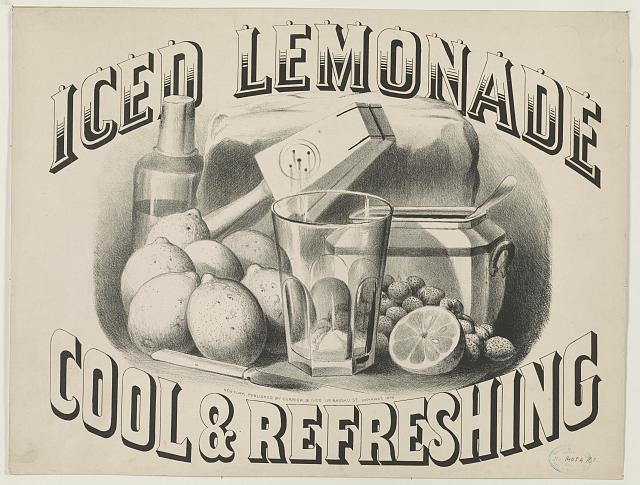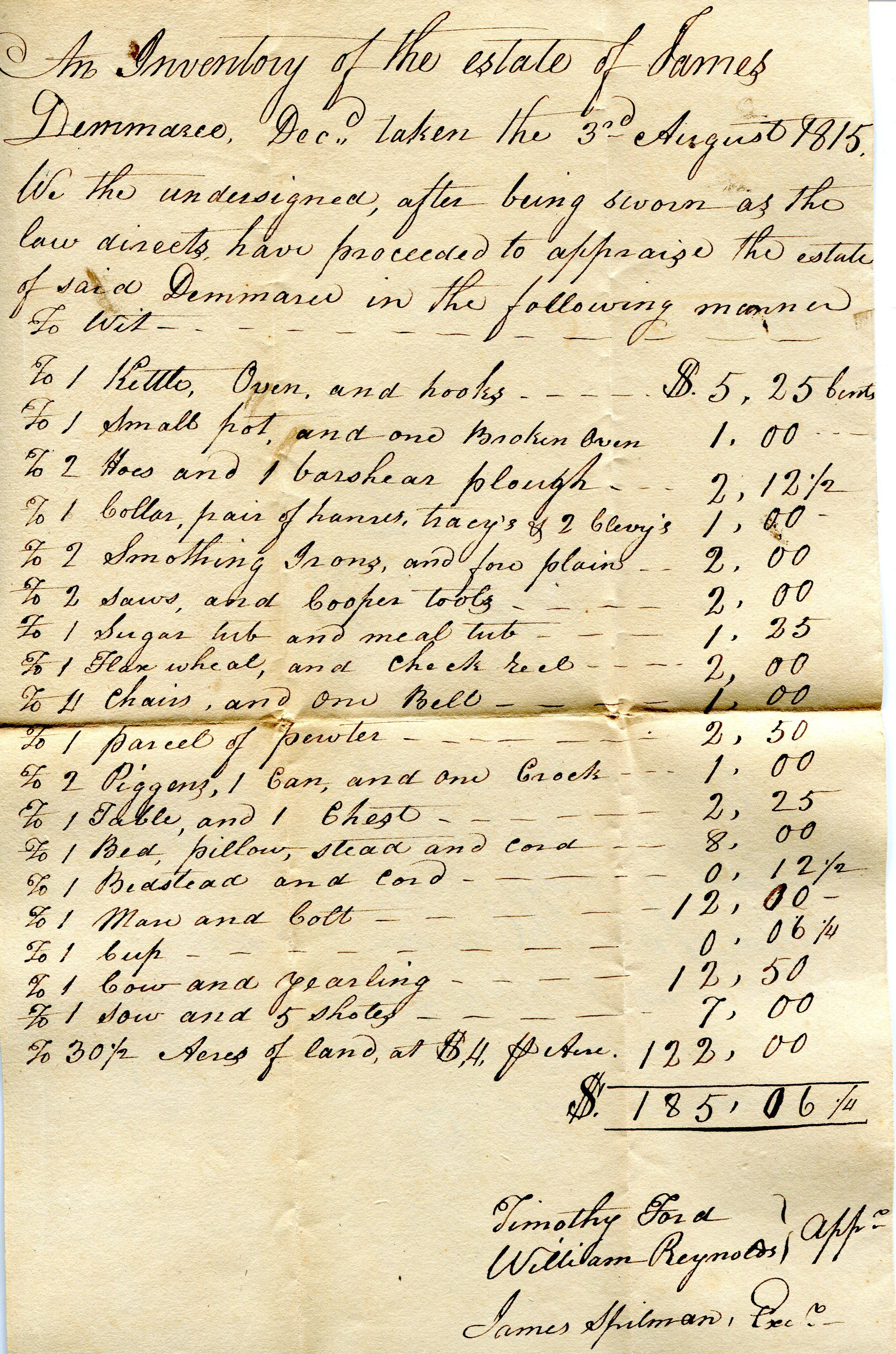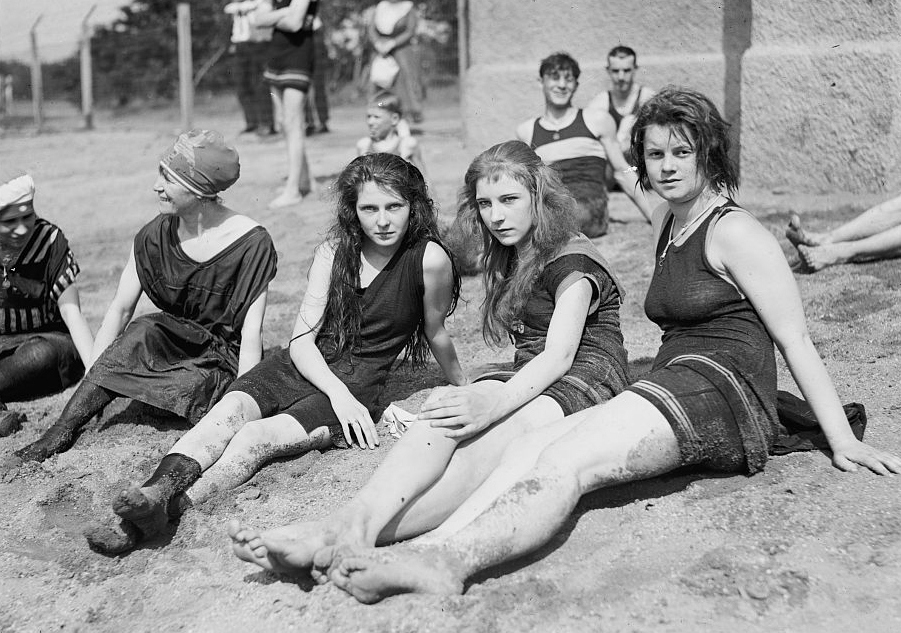My refrigerator died . . . in July! I’ve had to re-think how I buy, store, and prepare food. During this household drama, I wondered – how did people survive for millennia without refrigeration?
Before the refrigerator . . .
Until the invention of refrigeration in the late 19th century, average working people ate less fresh meat, dairy, and out of season fruits and vegetables shipped from distant places. More breads and salted or dried meats and fish not requiring refrigeration were consumed. Fruits and vegetables were seasonal – eat them while you have them. Or they could be preserved by drying, fermenting (like sauerkraut), or pickling. But remember, the technology for home canning fruits and vegetables in glass jars with metal lids is recent – developed in the 19th century.
Before refrigerators, perishable meat or dairy products were stored in cool cellars or spring houses, a small building constructed over a natural spring. Food could be stored in containers in the stream of water or in the cool atmosphere of the spring house.
Catherine Beecher, 19th century house and home expert, gave the following advice for making butter:
In hot weather it is important to keep the milk, cream, and butter as cool as possible. For this purpose, those who have no ice house, or very cool milk room, hang the cream down a well. In winter it is needful to raise the temperature of the cream a little, while turning, but care must be taken to do it very slightly, or the butter is injured. (p. 206 in Miss Beecher’s Domestic Receipt Book)

Wealthier households built large ice-pits in the ground topped with thick-walled ice houses. Ice and insulating straw or sawdust were packed in the pit in the winter to store the ice for warmer months. But the labor involved in building, supplying, and maintaining an ice house was beyond the means of many working class households.
Mary Randolph, author for The Virginia Housewife (1836) cookbook was writing for an upper class Southern audience who depended upon slave labor for household chores. Randolph assumed the readers would have ice houses and a ready supply of ice to make ice creams.She notes in the introduction to ice cream recipes:
“It is the practice with some indolent cooks, to set the freezer containing cream, in a tub with ice and salt, and put it in the ice house; it will certainly freeze there; but not until the watery particles have subsided, and by the separation destroy the cream.” She continues with detailed instructions for making an ice cream freezer, similar in design to modern home ice cream freezers. (p. 142)
In the early 1800s, the commercial ice business began. In winter, naturally formed ice was cut from lakes and ponds, stored in giant insulated ice warehouses, and distributed to customers. However, as population and urbanization increased, natural sources of ice became more polluted with sewage and other contaminants, making consuming natural ice dangerous.

Ice was delivered to homes in wagons by the “ice man” and used to chill an “ice box” in homes – the modern equivalent of a cooler.
Catherine Beecher described how to make an ice box, or a refrigerator . . .
Refrigerators are very excellent to keep meat, butter, milk, and cream, during hot weather. They are made in a superior manner, and kept for sale, but the following is a mode of securing a cheap one.
Take a barrel and bore holes in the bottom. Lay some small sticks crossing, and set a half a barrel within, with holes bored in the bottom. Nail list(a strip of cloth to create a tight seal) along the edge of each, and make a cover to lay on each, so that the cover resting on the list will make it very close. Then put ice into the inner one, and the water will filter through the holes in the bottom, and while the ice is preserved, it will make the inner half barrel a perfect refrigerator. Those who buy ice every day will find this a great convenience if they have no other refrigerator. (p. 267, A Treatise on Domestic Economy)
Mechanical refrigerators revolutionize daily life.
The widespread use of mechanical refrigeration began in the 1890s. What was the impact this new technology? Perishable dairy, meat, fruits and vegetables could be processed, shipped and stored resulting in increased dairy and protein consumption. Nutritionists have estimated that refrigeration contributed at least 5% to the increase in height of adults in the early 20th century.

Refrigerators for the home were developed in the 1910s and 1920s, but home freezers were very small or had to be purchased separately. After World War II, many new frozen convenience foods were introduced, but sales were not as expected except for two popular products – frozen orange juice and fish sticks. In the early 1950s, a study discovered the small refrigerators of most homes lacked the freezer space to accommodate numerous frozen foods. Only when people began to move to new homes in the suburbs in the 1950s and 1960s, with more space for home freezers, did frozen foods and home freezer sales increase.
In the classroom . . .
Display historical images related to refrigerator such as the ones here and ask students to analyze what they see. An excellent analysis guide from the Library of Congress is available here. Direct small groups to list their favorite foods and determine if those would have been possible in the era before refrigeration.
In history or geography classes, discuss the impact of the climate of a culture on foods people grew and consumed as well as how that food would have been preserved and stored before mechanical refrigeration. For example, food consumption and preservation in Arctic cultures was very different from equatorial regions.
To learn more . . .
For about the history of daily life and classroom ideas and activities, see Investigating Family, Food, and Housing Themes in Social Studies.
I also recommend:
- Smithsonian’s Museum of American History blog “Keeping your (food) cool: From ice harvesting to electric refrigeration“
- Atlas Obscura Blog “When Everyone Wanted to Be the Iceman”
P.S. My refrigerator is working again. But as I packed a cooler with ice the past two weeks, I thought about Catherine Beecher’s advice for making a cooler from barrels. I realized I had only returned to late 19th-century living because I could buy commercially prepared ice and canned foods. I’ve concluded I might not be ready to live in the pre-industrial era without ice, convenience foods, and air-conditioning, especially in July.
About the header image: Iced Lemonade print published by Currier and Ives, c. 1879. Courtesy of the Library of Congress.




I could use this particular essential question in my middle school classroom to allow students to think about how their lives are so impacted by refrigerators and how food was preserved before refrigeration. This quiz and this information about nutrition in the Middle Ages would be great to incorporate with this theme for my Middle Ages unit. This would show students how much times have changed and allow them to truly appreciate what we have in 2018. And I could create an interdisciplinary unit with the science or health or family and consumer science teacher about food safety and how nutrition has changed over time.
One could use this in a classroom to discuss nutrition before the invention of the refrigerator. Now most people can store their food when they buy it and eat it later, however prior to the invention it made eating meat and other fresh items a lot harder. So as a class you could propose the question “How has the invention of the refrigerator impacted us?” Then discuss with one another the positives and possible negatives too.
I love this idea for my classroom in a lesson over the develop of technology and compare it to how we use technology in the kitchen in present times. Students can participate in discussions on how important the refrigerator was in history. For example, they might brainstorm how different their diet would be today without refrigeration.
I can use this image to teach elementary students about how in the past technology was completely different. They think of drinks as easily accessible in the refrigerator. Students could see how their lives are different, and easier, than the lives of people in that past.
I could use this to compare our everyday lives with those of the past in a fourth grade class. I would use the image of the refrigerator ad in the mid 1900’s to teach the concept of price changes and inflation over time. The ad says 65 cent a month; that would be great to compare to the price of a fridge now.